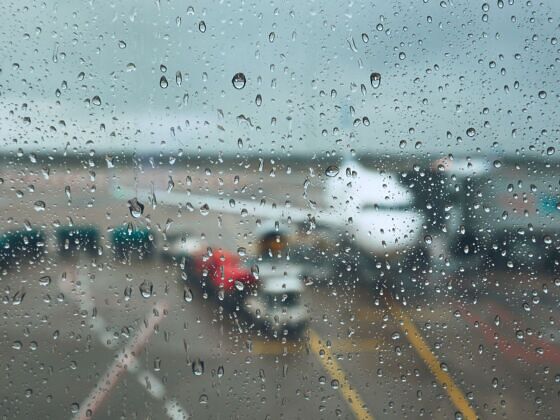It’s one of those nightmare scenarios: You’re on your flight, and all seems well. Then, when you’re mere moments from starting the descent to your destination, the pilot announces the plane can’t land because of bad weather. Panic sets in. Will the plane be struck by lightning? Will you have to go all the way back to your starting point? An airline pilot who goes by the handle @almostcaptainmorgan (the pilot behind that viral video on the Denver’s airport bathrooms with windows that offer very little privacy) recently took to Instagram to explain what to expect if you’re ever caught in a storm while flying.


A Pilot Explains What Happens When Your Plane Can't Land Due to Bad Weather
Morgan, the pilot, explains that on a recent flight from St. Louis to Chicago, air traffic control ordered the plane to execute a “hold and wait.” That means that the plane couldn’t land in Chicago, but actually had to circle the airport (in the air) before getting the all clear. One problem: Air traffic control wanted the plane to wait for an hour, but there was only enough fuel to keep the plane in the air for 30 minutes.
Using a special keypad in the cockpit (called the ACARS “text messaging system”) the plane communicated its predicament to air traffic control. This is where the situation gets tricky (and probably uncomfortable) for passengers: In this case, the plane was actually told to return to St. Louis. A collective groan probably emitted from the passenger cabin when they got the news, but it didn’t turn out all bad: Once they got there, the plane underwent a so-called gas and go. All the passengers stay on the plane, it refuels, and they head back to Chicago (where the weather had, by then, cleared up).
In the scenario Morgan describes, passengers will eventually get to their destination, it might just take double the time. But there are other ways a bad weather situation might play out. According to the FAA, most aircrafts can safely fly over thunderstorms, but sometimes a thunderstorm can block a flight path.
In that case, the plane will be rerouted to nearby airspace, and in extreme cases, to a neighboring airport. In that case, passengers might end up in an entirely different part of the country than intended, for their own safety. Other planes that haven’t taken off yet have to wait at the gate until its safe to depart (which could result in long delays), while others that are waiting to land will be ordered into a holding pattern. The FAA also confirms what Morgan said in video: sometimes planes are ordered to land at different airports to refuel and wait out the storm.
The bottom line is, no matter what decision air traffic control makes about the plane, if there’s bad weather at your destination, passengers can expect long delays.